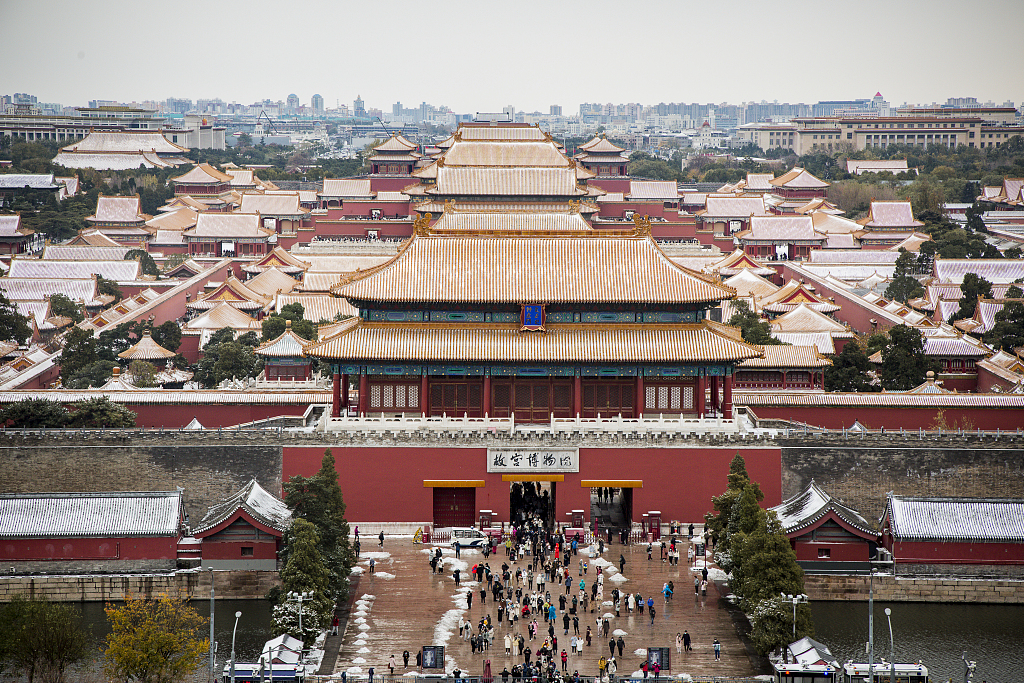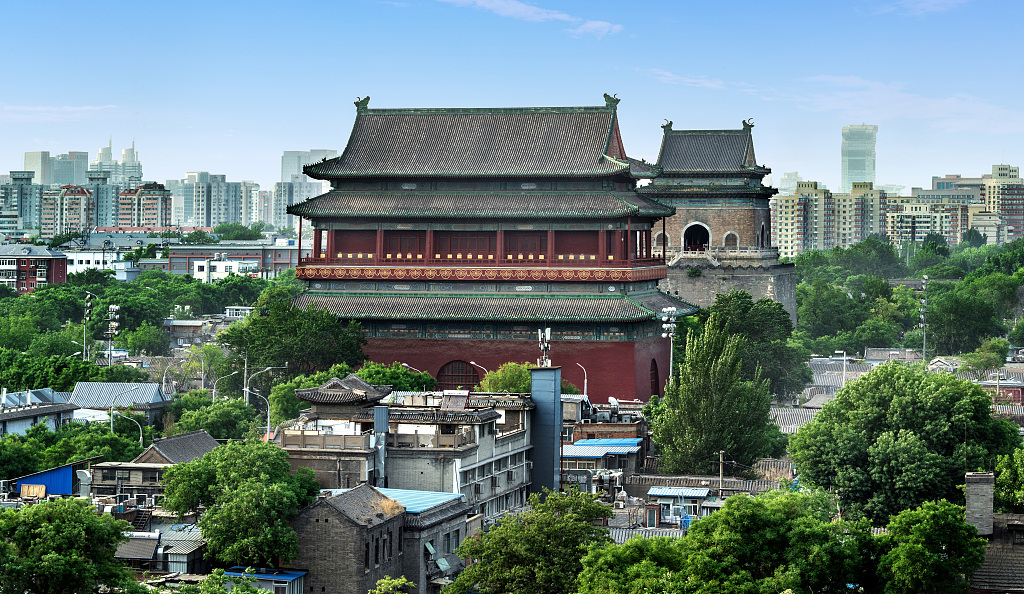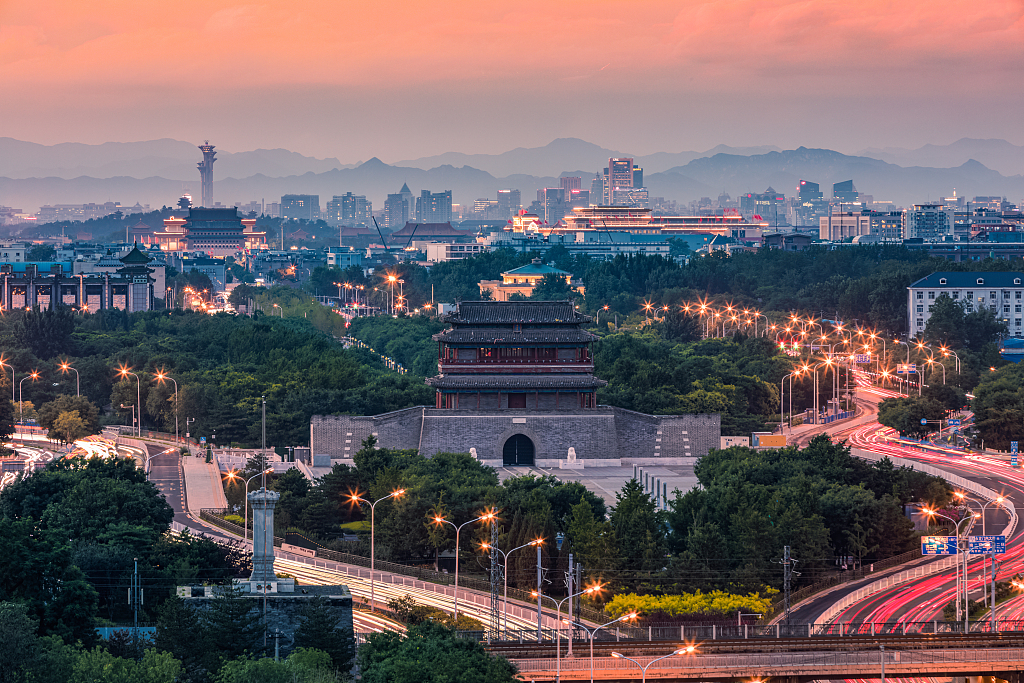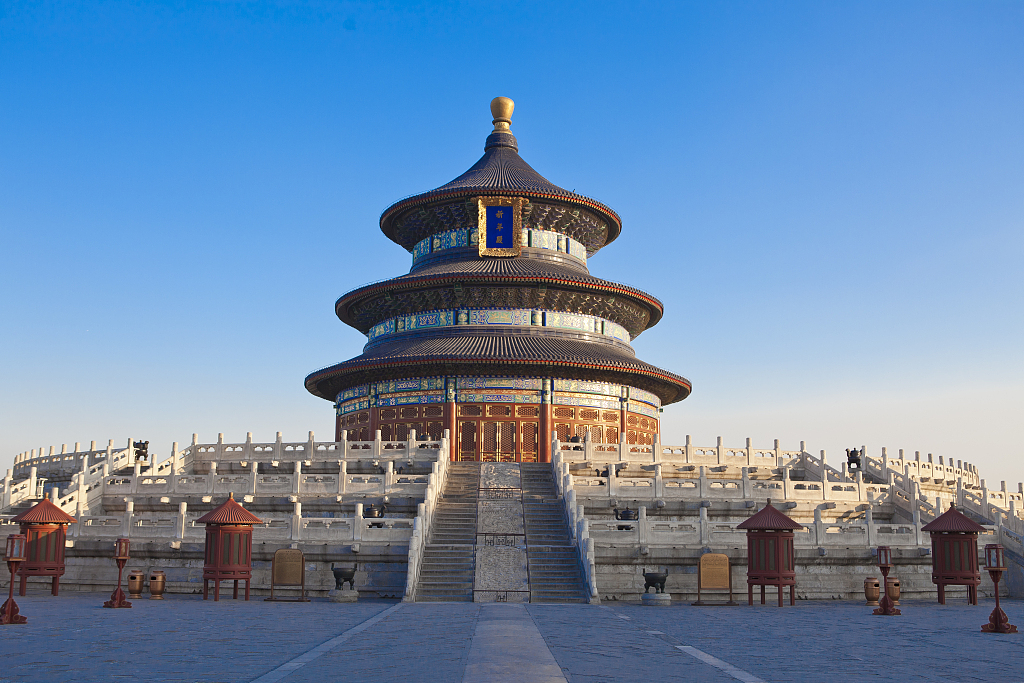
The Palace Museum, also known as the Forbidden City. /CFP
The Palace Museum, also known as the Forbidden City. /CFP
For the first time ever, a conservation area has been specified for Beijing's Central Axis, as China gears up for the UNESCO World Heritage application of its capital city's ancient "backbone."

The Drum Tower and Bell Tower in Beijing. /CFP
The Drum Tower and Bell Tower in Beijing. /CFP
The move is part of a latest protection plan issued by Beijing authorities. In line with the requirements of bidding for UNESCO World Heritage status, the brand-new plan, which will roll out from 2022 to 2035, is expected to provide direction strategies for conservation work.
![The Beijing Central Axis stretches from the Drum Tower and Bell Tower in the north to the Yongding Gate in the south. The Beijing Olympic Park also sits on the extended line of this axis. /CGTN [Photographer: Qu Bo, Designers: Qu Bo, Zhu Shangfan]](https://news.cgtn.com/news/2023-02-01/China-designates-conservation-area-for-Beijing-Central-Axis-1h42TdiZgmk/img/e590c4c1548644d1aa7855250a27a456/e590c4c1548644d1aa7855250a27a456.jpeg)
The Beijing Central Axis stretches from the Drum Tower and Bell Tower in the north to the Yongding Gate in the south. The Beijing Olympic Park also sits on the extended line of this axis. /CGTN [Photographer: Qu Bo, Designers: Qu Bo, Zhu Shangfan]
The Beijing Central Axis stretches from the Drum Tower and Bell Tower in the north to the Yongding Gate in the south. The Beijing Olympic Park also sits on the extended line of this axis. /CGTN [Photographer: Qu Bo, Designers: Qu Bo, Zhu Shangfan]
The 7.8-kilometer-long Beijing Central Axis, which stretches from the Drum Tower and Bell Tower in the north to the Yongding Gate in the south, has witnessed the Chinese capital's history since the 13th century. Called the "backbone" of old Beijing, this ancient axis will become a conservation area rationalized into a heritage zone and a buffer zone.

The Yongding Gate in Beijing. /CFP
The Yongding Gate in Beijing. /CFP
The heritage zone covers an area of about 5.9 square kilometers, including 15 heritage sites such as the famous Palace Museum and the Temple of Heaven, while the buffer zone covers a wider area of about 45.4 square kilometers, according to the over decade-long plan.

The Temple of Heaven in Beijing. /CFP
The Temple of Heaven in Beijing. /CFP
The plan also emphasizes the overall conservation and revival of Beijing's historical old city.